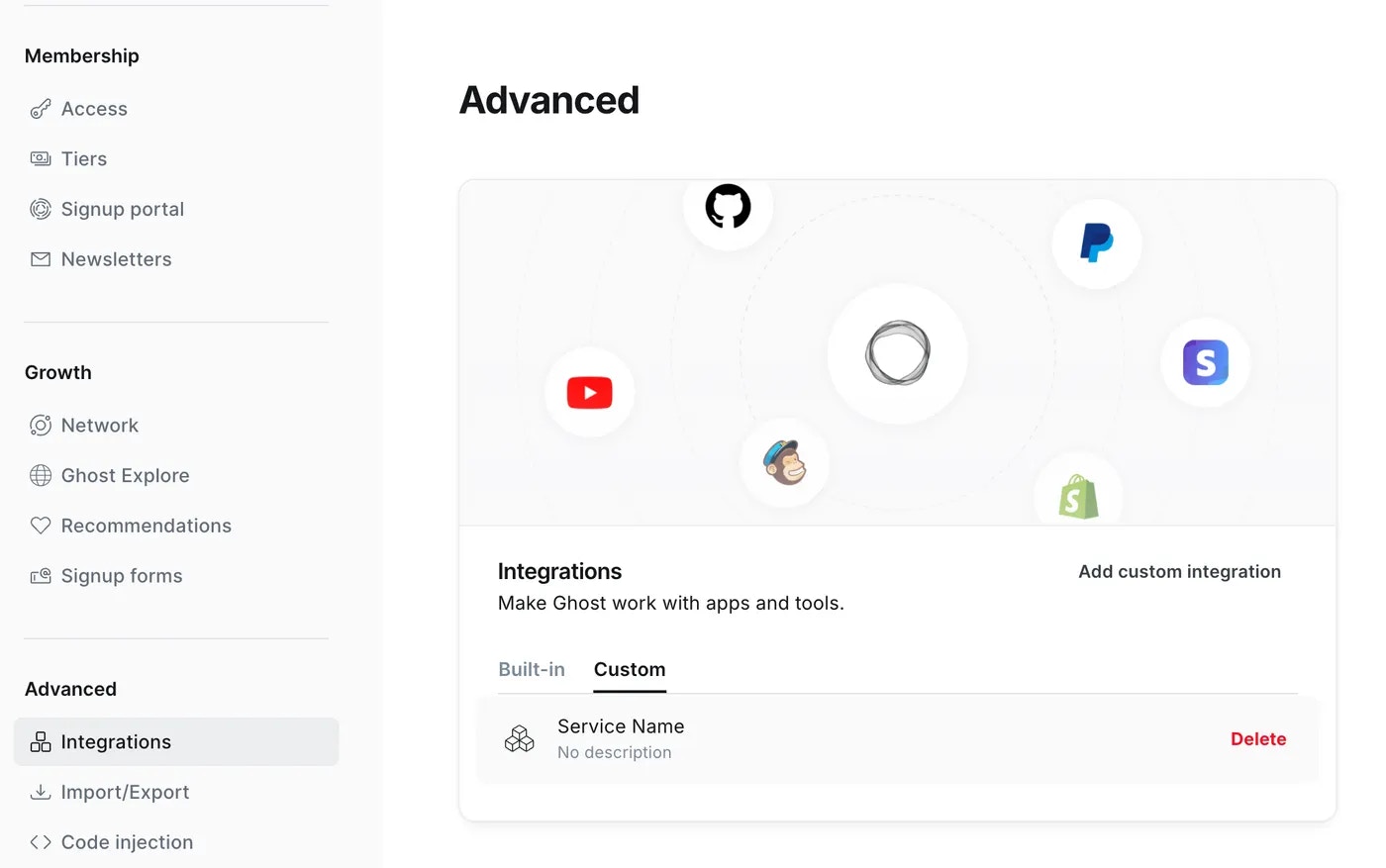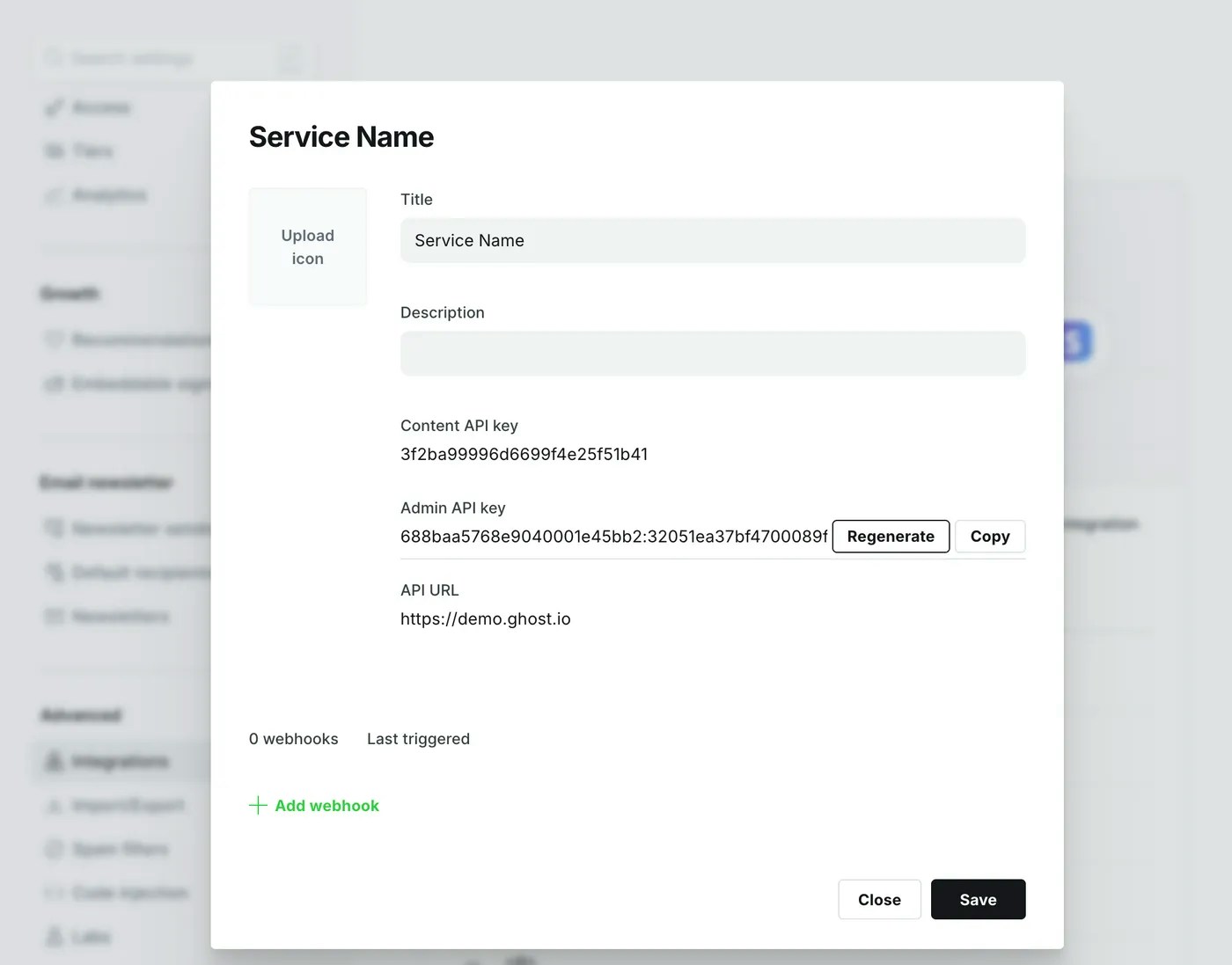Access control is managed via an API key, and even the most complex filters are made simple with our SDK. The Content API is designed to be fully cachable, meaning you can fetch data as often as you like without limitation.
API Clients
JavaScript Client Library
We’ve developed an API client for JavaScript that will allow you to quickly and easily interact with the Content API. The client is an advanced wrapper on top of our REST API - everything that can be done with the Content API can be done using the client, with no need to deal with the details of authentication or the request & response format.URL
https://{admin_domain}/ghost/api/content/
Your admin domain can be different to your site domain. Using the correct domain and protocol are critical to getting consistent behaviour, particularly when dealing with CORS in the browser. All Ghost(Pro) blogs have a *.ghost.io domain as their admin domain and require https.
Key
?key={key}
Content API keys are provided via a query parameter in the URL. These keys are safe for use in browsers and other insecure environments, as they only ever provide access to public data. Sites in private mode should consider where they share any keys they create.
Obtain the Content API URL and key by creating a new Custom Integration under the Integrations screen in Ghost Admin.

Search "integrations" in your settings to jump right to the section.

You can regenerate the Content API key any time, but any scripts or applications using it will need to be updated.
Accept-Version Header
Accept-Version: v{major}.{minor}
Use the Accept-Version header to indicate the minimum version of Ghost’s API to operate with. See API Versioning for more details.
Working Example
Endpoints
The Content API provides access to Posts, Pages, Tags, Authors, Tiers, and Settings. All endpoints return JSON and are considered stable.Working Example
| Verb | Path | Method |
|---|---|---|
| GET | /posts/ | Browse posts |
| GET | /posts/{id}/ | Read a post by ID |
| GET | /posts/slug/{slug}/ | Read a post by slug |
| GET | /authors/ | Browse authors |
| GET | /authors/{id}/ | Read an author by ID |
| GET | /authors/slug/{slug}/ | Read a author by slug |
| GET | /tags/ | Browse tags |
| GET | /tags/{id}/ | Read a tag by ID |
| GET | /tags/slug/{slug}/ | Read a tag by slug |
| GET | /pages/ | Browse pages |
| GET | /pages/{id}/ | Read a page by ID |
| GET | /pages/slug/{slug}/ | Read a page by slug |
| GET | /tiers/ | Browse tiers |
| GET | /settings/ | Browse settings |
Resources
The API will always return valid JSON in the same structure:resource_type: will always match the resource name in the URL. All resources are returned wrapped in an array, with the exception of/site/and/settings/.meta: contains pagination information for browse requests.

